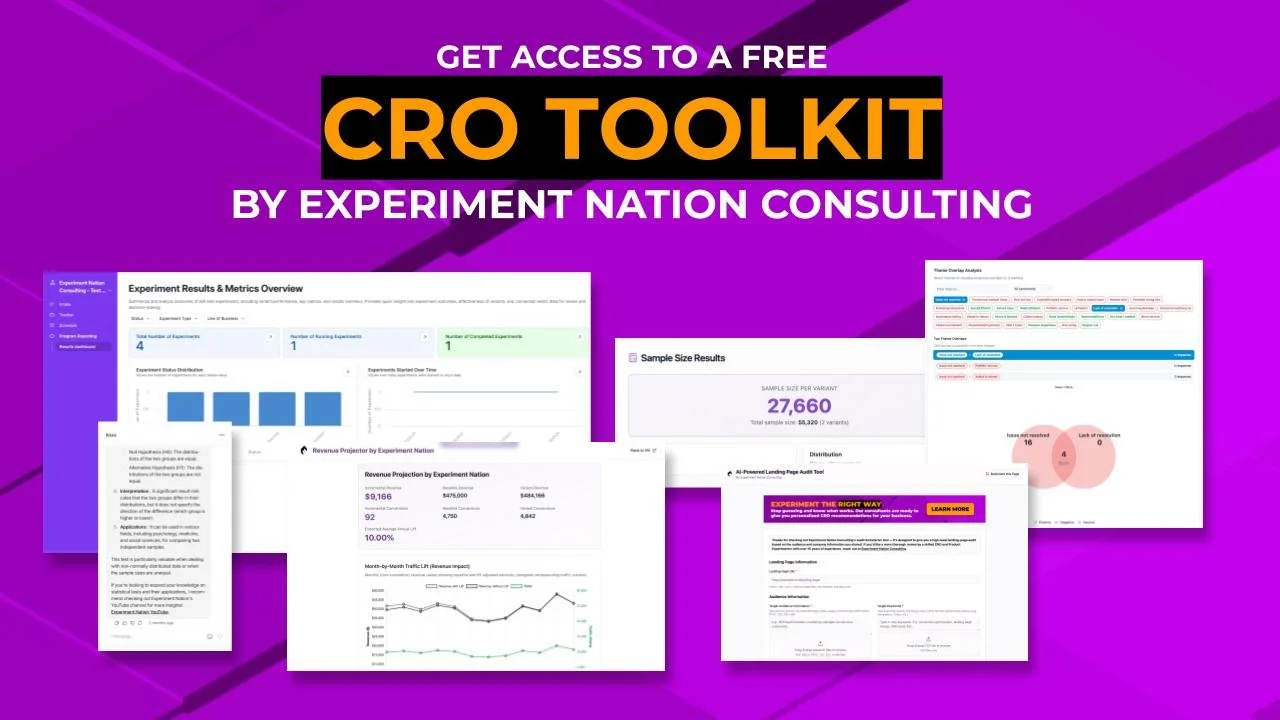
New Episode
things CROs refuse to automate with AI
With Rommil and Gerda
Unlock our CRO Toolkit
Join Experiment Nation and get our full CRO Toolkit free. Access practical AI-powered tools to work faster — landing page audits, experiment calculators, survey analysis, anomaly detection, revenue forecasting, an experiment tracker, plus ENZO, our chatbot trained on hundreds of interviews. You’ll also get industry reports and our CRO Certification exam.
If you want to level up your experimentation program without the cost, this is your easiest win of the year.
Latest Episodes

Subscribe to our weekly newsletter
On top of receiving our latest eBook of 60+ insightful learnings from Experimenters from around the world, you’ll get access to 65 recorded Conference sessions, interviews, news, and articles via email. Subscribers also have access to our Slack channel.
Join the over 2.5K subscribers today.

Follow us on TikTok
Experiment Nation is an award-winning community of Conversion Rate Optimizers and Product Experimenters founded by Rommil Santiago to help give every Experimenter a Voice.













